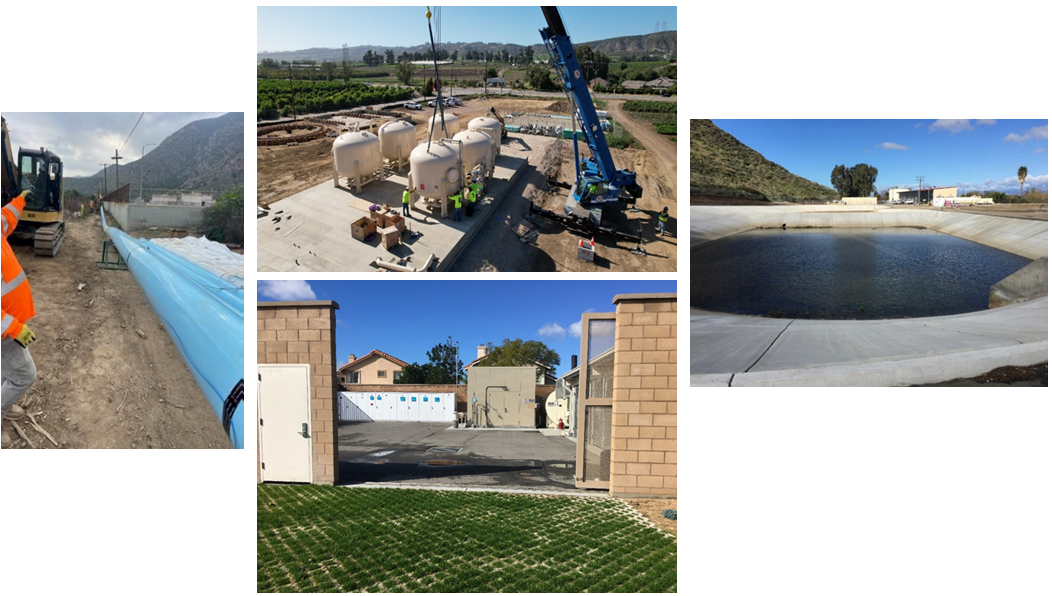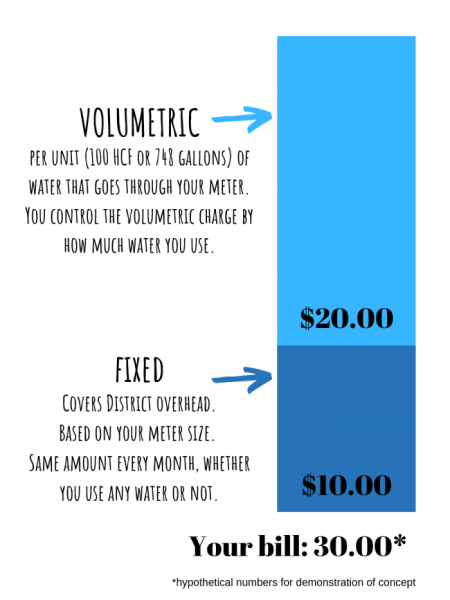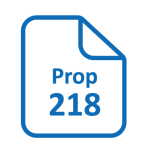
Rate Study
In the Spring 2023, the District embarked upon a comprehensive five-year rate study in accordance with Proposition 218. The purpose of the study was to review our existing rates to determine if rates were sufficient for the operation of our current system in addition to projected future costs of new water supply projects in infrastructure rehabilitation.
Camrosa held a Community Forum on Rates on March 18, 2024, to receive customer input and answer questions. The Board of Directors accepted the Rate Study at the April 19, 2024 Board meeting and set the public hearing for Thursday, June 6, 2024, at 5:00 P.M. to adopt the proposed rates in Ordinance 42-24.

WHAT IS A RATE STUDY?
A rate study is a collaboration between the General Manager, Camrosa’s financial team, rate experts, and the Board of Directors to determine the cost of delivering water now and into the future.
Hundreds of considerations go into the cost of delivering water and wastewater services to our customers: purchasing imported water from our wholesalers, Calleguas and Metropolitan; pumping and treating groundwater; moving water uphill and into tanks; collecting and treating sewer flows; producing recycled water; diverting water off the Conejo Creek; maintaining 200-plus miles of pipeline. We also have to plan for major projects we need to do in the coming years and prepare for emergency repairs we can’t count on but need to be ready for. We need to schedule and fund the repair, rehabilitation, and replacement of aging infrastructure and the escalating cost of the products and services we rely on.
We hope this page helps you get an idea of what a rate study entails and the cost to provide water and wastewater services. You can view/download the rate study HERE. On April 11th, the District set a public hearing date of June 6th, to hear public comments and consider approving the five-year plan.
HOW MUCH ARE RATES GOING UP?
Camrosa’s water bill is divided in two parts: the fixed charge and the volumetric charge. All three classes of water—potable, nonpotable, and recycled—have these two charges.
The fixed charge covers a portion of the District’s fixed overhead—purchases of imported water, electricity, chemicals. This charge is based on your meter size and is the same every month, whether you use any water or not. This essentially pays for the ongoing expenses of the District’s ability to deliver water to your meter.
The volumetric charge is associated with how much water you use. We charge for each “unit” of water that goes through your meter. A Camrosa “unit” is one hundred cubic feet (HCF), or 748 gallons. Everyone in the District pays the same amount for potable water—except for residential potable water users, whose first 12 units are priced at a discount. This “Tier 1” is what the Board of Directors determined was a basic amount of water necessary for indoor and outdoor uses at the standard house in the District service area. Thirteen units and above are in Tier 2, charged at the same amount as every other potable water use in the District.
The typical residential customer with a standard residential lot using 12 units of water will see a water bill increase of about $2.57 per month for the first year’s rate adjustment effective July 2024 and the proposed rate adjustment for wastewater services would bring the rate to $48.77 per month, an increase of $5.72 per month for the first year’s rate adjustment effective July 2024. Use our ONLINE BILL CALCULATOR tool to see how the rate change will affect your monthly bill.

WHAT ARE THE MAIN DRIVERS?
Like anyone’s home or business, a portion of Camrosa’s expenses are beyond our control: imported water, electricity, gas, health care, etc. But we can control the impact of some of those costs on our budget—and on our customers—by decreasing how much imported water we buy, by increasing our efficiency, and maximizing our productivity. These efforts are foundational to Camrosa’s strategy and have paid significant dividends over the years. In 1997, 85 percent of the water Camrosa delivered was imported water; in 2018, 29 percent was imported. The rest is local water—groundwater, nonpotable creek water, and recycled water—that is both more reliable for being local and cheaper to produce than the cost of buying imported water.
In order to continue this trend of reducing our dependency on imported water, we need to continue building new local projects, proactively maintaining our existing infrastructure, and installing backup power generation in case of emergency interruptions. These things all cost money, but they all save resources in the long run.
STAY INFORMED!
We hope this page helps you get an idea of what is included in a rate study and what costs are included in the water and wastewater rates you pay. Stay informed by visiting the district’s website and look for upcoming public outreach notices to learn more about the rate study and how the rate adjustments will affect your monthly utility bill.








